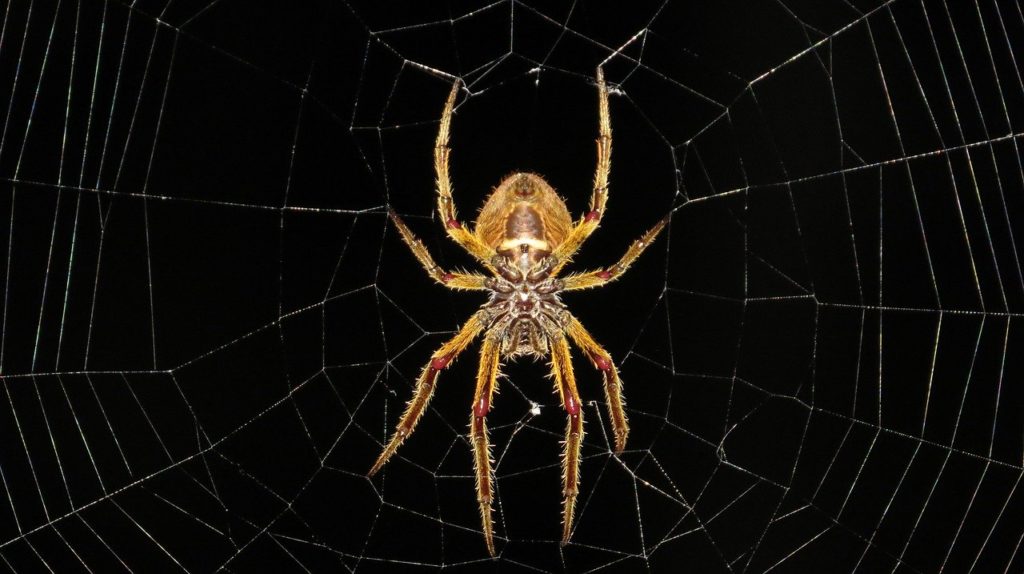Spider Types in Reno, Nevada
With over 40,000 known species of spiders worldwide, spiders can be found on every continent except Antarctica. When you are outside, the spider types you’re most likely to encounter in Nevada are fishing spiders, orb weavers, crab spiders, wolf spiders, nursery web spiders, and jumping spiders.
Nursery Web Spiders
Nursery web spiders are named for their excellent treatment of their egg sacs. They can be found near water, in trees or shrubs, and in your garage.
Orb Weavers
Orb weavers inhabit any place offering a structure on which a web can be built, including branches, grass, shrubs, and vines. Some orb weavers stay in the center of their web, while others wait in a hidden place near their web known as a retreat. Orb weavers typically have tiny eyes and protruding abdomens.
Crab Spiders
Crab spiders can easily be found on flowers or on the ground. When they aren’t waiting for prey to cross their path, they scuttle sidewards to relocate. Their back legs are noticeably smaller than their front legs, and their appearance varies widely between individuals.
Wolf Spiders
Wolf spiders are energetic hunters. They are comparable in appearance to fishing spiders, yet are smaller and rest with their legs closer to their body. Wolf spiders are protective parents, and it is not unusual to see them carrying their egg sacs or young.
Jumping Spiders
Jumping spiders are skillful hunters who inhabit open locations and high lawns. Jumping spiders get their name because they move around by jumping. They differ in pattern and color, but tend to have prominent eyes and small, fuzzy bodies.
Not sure what type of spider you have? Give us a call at (775) 305-3785 today to learn more!
Why Are Spiders Vital?
Spiders are a crucial part of their ecological communities, specifically in their function as insect eaters. It is estimated that spiders consume in between 400 and also 800 million tons of pests each year.
Although spiders are most frequently viewed as predators, they are also prey. Spiders are a vital food source for birds, frogs, and even small rodents such as mice. Some animals, most commonly the parasitic wasp larva, prey exclusively on spiders.
Importance of Spider Silk
Along with their functions as killer and prey, spiders are known for the silk they create. Spider silk is widely recognized by many cultures for its elasticity and also strength. Humans have actually used spider silk as crosshairs, bandages, fishing nets, as well as towel.
Spiders are also studied for research possibilities. With over 40,000 known species of spiders worldwide, spiders can be found on every continent other than Antarctica. Spiders vary in size, appearance, hunting methods, and even courtship behaviors.
Spider Web Making
When it comes to constructing webs, some spiders make the stereotypical flat “orb” webs while others make ugly cobwebs. Others produce conical webs, and still others build something totally different. If you see a web, you can be confident that the spider who built it is likely hiding nearby.
While all spiders can spin silk, not all spiders build webs. Spiders that hunt for food without utilizing a web are fast and have better vision than spider species that rely on their webs. Spiders who hunt do their thing by attacking or stalking their prey. Some spiders hunt with a unique spitting technique in which they spit silk on their prey to catch their food.
Spiders can additionally utilize their silk for airborne relocation in a process called ballooning. Spiders can construct silk hot air balloons, and they can navigate through an instinctive ability to sense and use atmospheric electromagnetic fields to guide their silk balloons. Researchers continue to be impressed by the unique properties and applications that spiders have devised for the silk they generate.
Have questions about spiders, or about treatment or pest control options for any spider infestations you may have? Contact us today to learn more!
